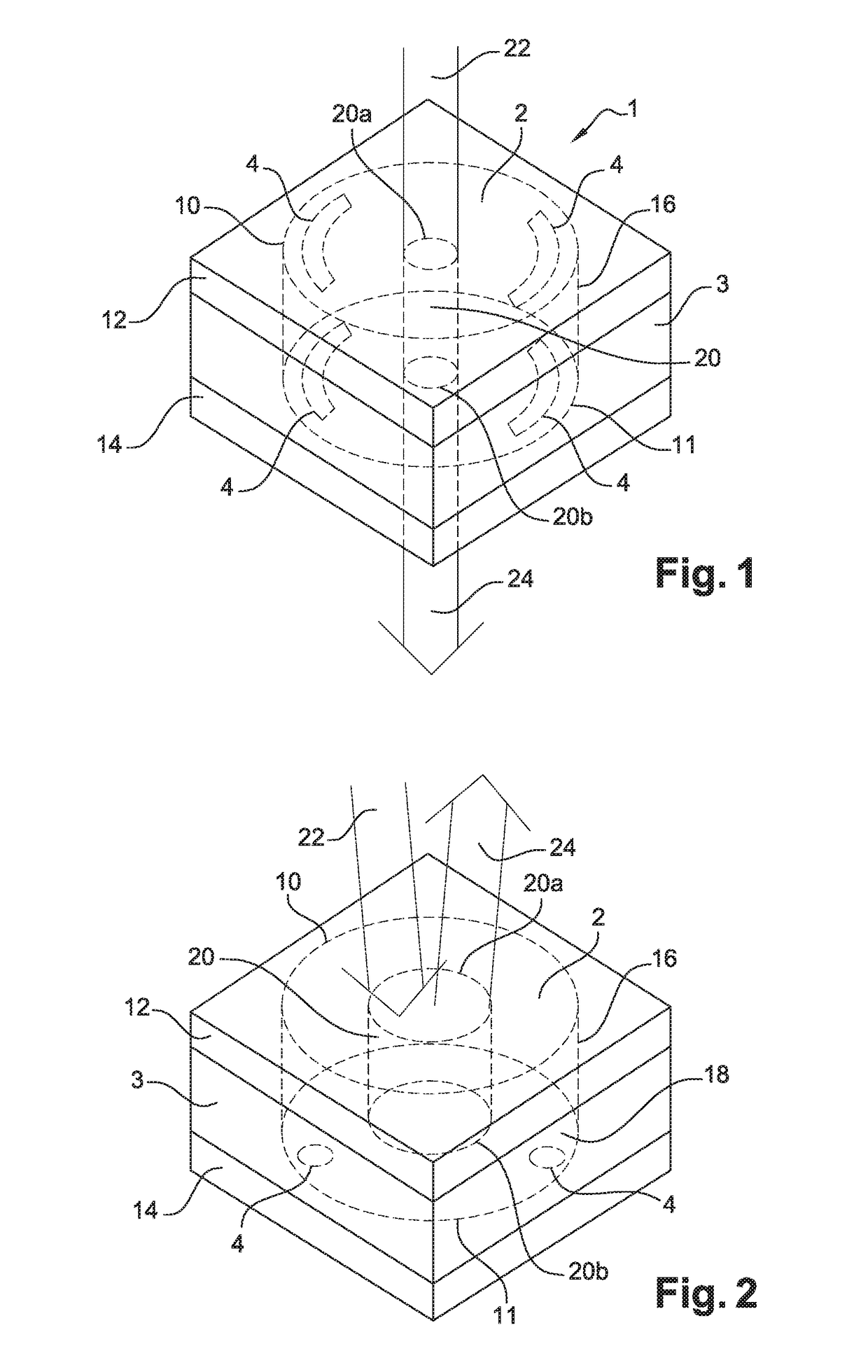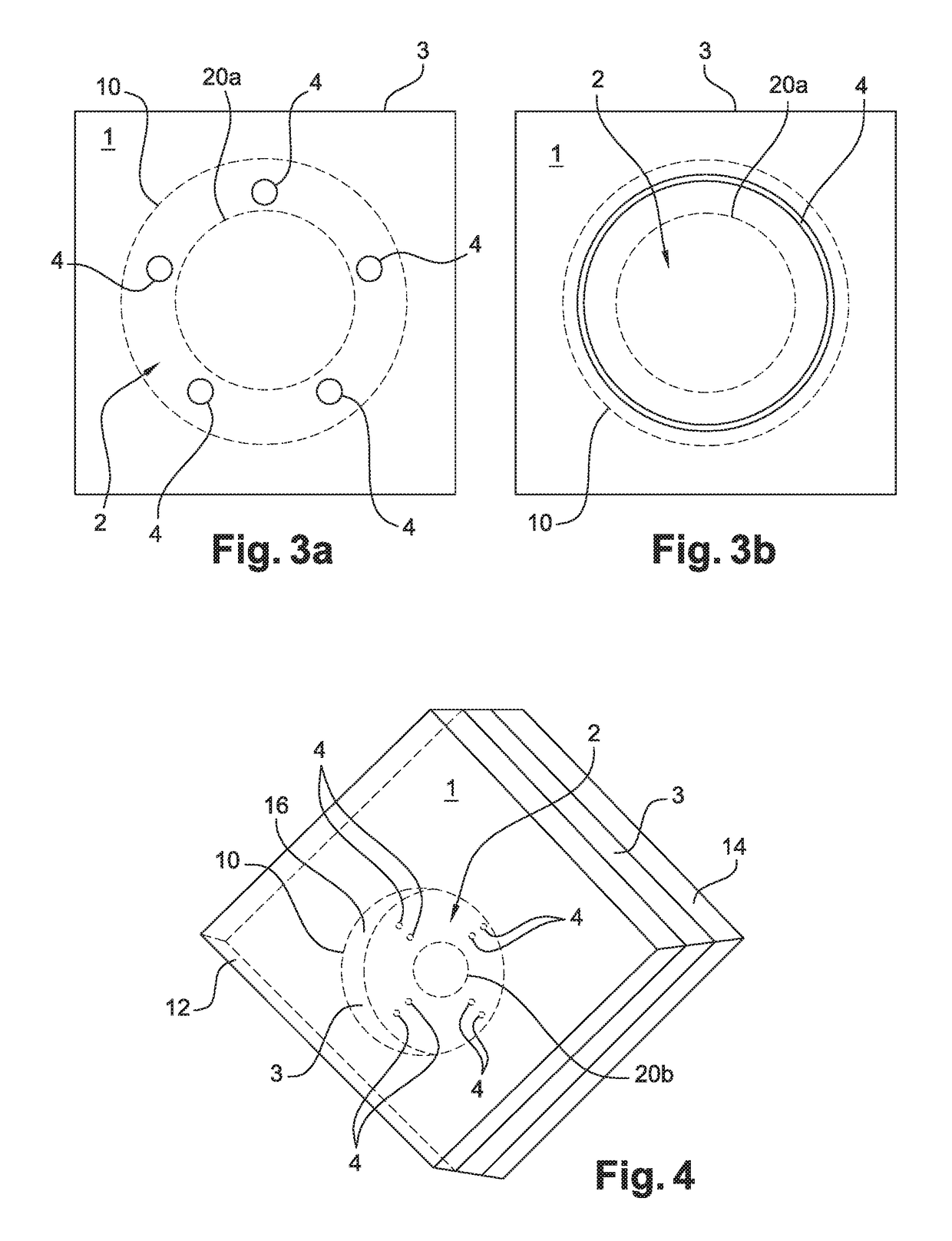Alkali vapor cell
a technology of alkali vapor cells and vapor cells, which is applied in the direction of pre-selected time interval producing apparatus, automatic control of pulses, instruments, etc., can solve the problems of high reactivity of alkali metals with oxygen and water, light shift effect, and drastic reduction of fabrication costs, so as to achieve the effect of higher alkali metal wettability
- Summary
- Abstract
- Description
- Claims
- Application Information
AI Technical Summary
Benefits of technology
Problems solved by technology
Method used
Image
Examples
implementation example
Detailed Implementation Example
[0100]Alkali vapor cells 1 according to the invention are fabricated by etching through holes of 2 mm diameter into a 1 mm thick silicon wafer followed by anodic bonding of a first borofloat glass wafer of 0.2 mm thickness onto one side of the silicon wafer. Following this process step, the cavities 2 are filled with 10 nL of aqueous RbN3 solution of 100 g / L concentration using a dispenser from Microdrop Technologies GmbH, type MD-K-130-030. The details of deposition of dissolved RbN3 solution are disclosed in patent application US 20120301631 (A1). On a second borofloat glass wafer of 0.2 mm thickness, discs of 80 μm diameter with 10 nm Ti adhesion layer followed by 50 nm Au are structured by lift-off process. The open cavities in the silicon wafer are then hermetically closed by anodic bonding using the second glass wafer, with the gold discs being exposed to the cavities. The configuration of the gold discs is such that eight gold discs are exposed ...
PUM
 Login to View More
Login to View More Abstract
Description
Claims
Application Information
 Login to View More
Login to View More - R&D
- Intellectual Property
- Life Sciences
- Materials
- Tech Scout
- Unparalleled Data Quality
- Higher Quality Content
- 60% Fewer Hallucinations
Browse by: Latest US Patents, China's latest patents, Technical Efficacy Thesaurus, Application Domain, Technology Topic, Popular Technical Reports.
© 2025 PatSnap. All rights reserved.Legal|Privacy policy|Modern Slavery Act Transparency Statement|Sitemap|About US| Contact US: help@patsnap.com



